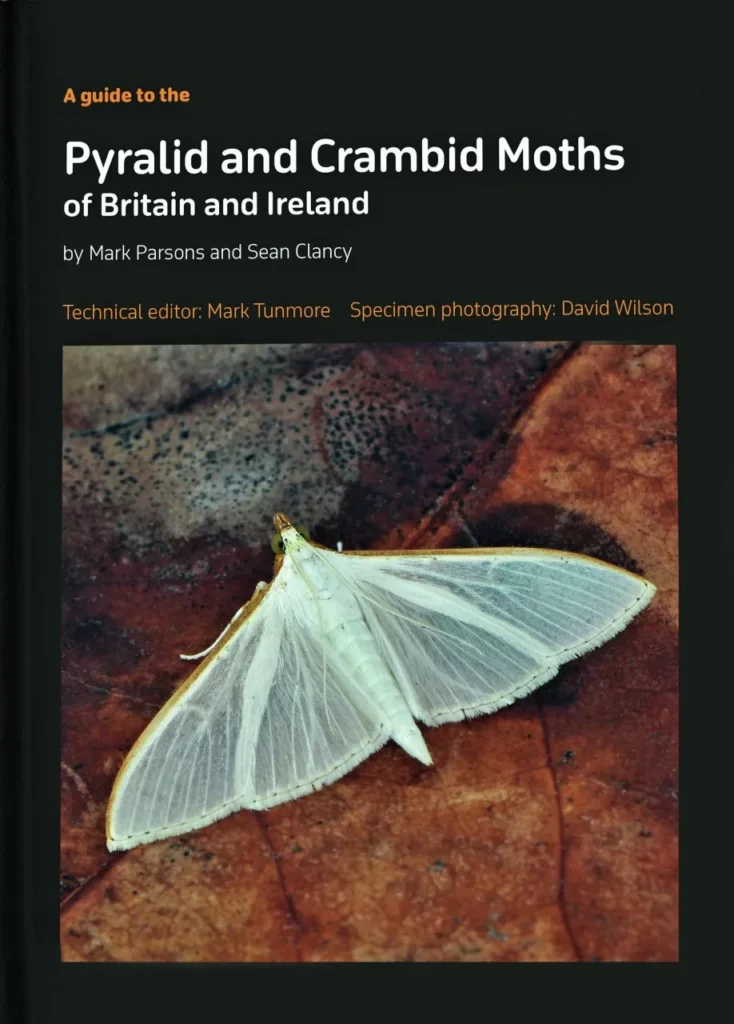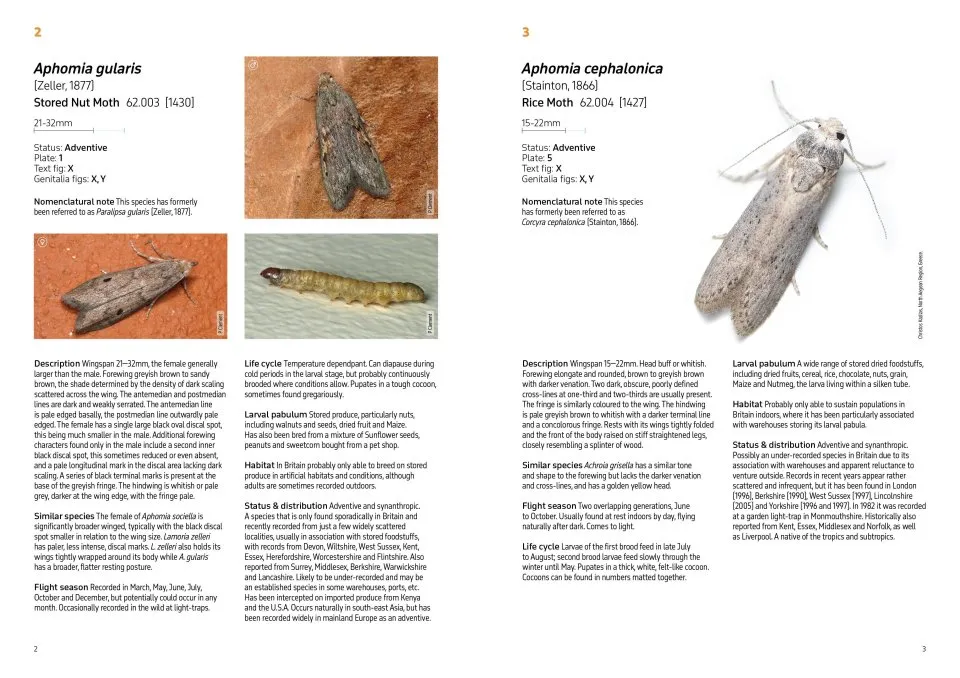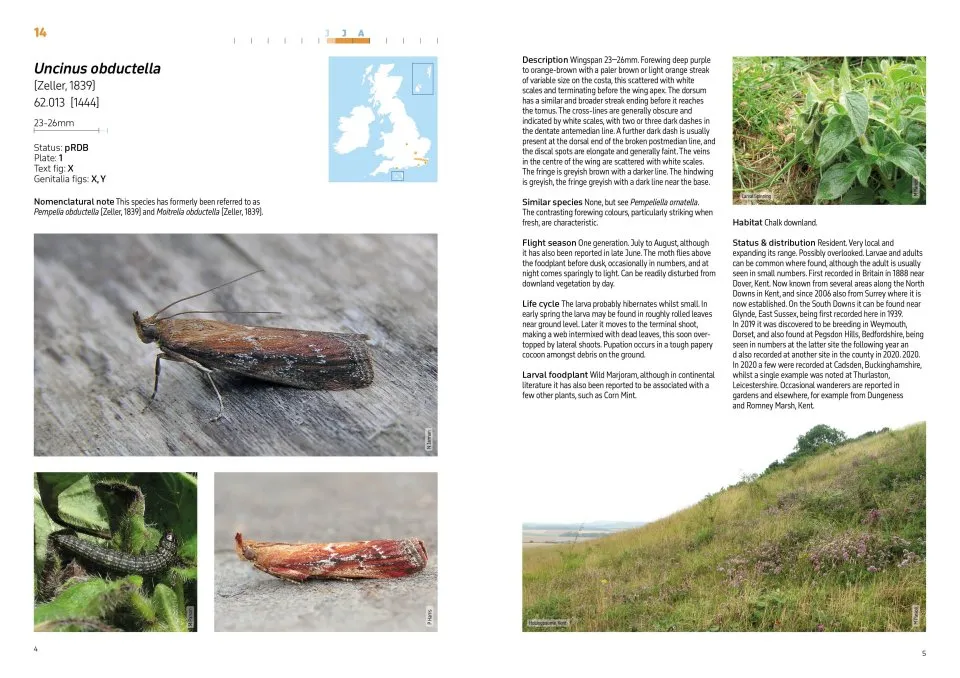The pyralid and crambid families contain many of the more commonly encountered micro-moths, such as the ever-increasing Box-tree Moth Cydalima perspectalis, the ‘grass-moths’ and the difficult Eudonia/Scoparia group (the scourge of many a ‘moth-er’). A large number of species in these families are naturally migratory, relatively recent colonists or have been accidentally introduced.
Previously, the only publication dealing with these moths in Britain was Barry Goater’s 1986 British Pyralid Moths. It is fair to say that a lot has changed since then! They are now regarded as two separate families and an astonishing 40 new species have been added to the British list since Goater’s publication. Consequently, this new guide by Parsons and Clancy is a very welcome addition to the moth-guide literature of Britain and Ireland.
View this book on the NHBS website
The reader will immediately notice that this new hardback guide is a weighty tome, and anyone consequently hoping for detailed, high-quality content will not be disappointed. In total, 275 species are considered, with the main 207 (natives, immigrants and naturalised) given a full one-, two- or three-page species account with up-to-date maps of known range alongside text on descriptions, similar species, flight season, life cycle, foodplants, habitat and status. The remaining species are covered in shorter accounts given in three appendices of ‘Adventives’, ‘Doubtfully British’ and ‘Intercepts’. Such has been the pace of change that three further species were added to the British list during the final stages of the book’s compilation, and accounts of these are included in a ‘Stop press’ addendum.
The authors have taken time to source excellent quality images of each moth, and many accounts also include images of the larva, feeding damage and habitat. For some of the trickier-to-identify species helpful diagrams point to significant identification features, and there are also useful summaries of key characters for the difficult species groups. At the back there is a series of ten plates showing pinned specimens, useful for comparing hindwing features, and there are genitalia figures for tricky species pairs and groups.
All this is preceded by a short set of introductory pages, including clear diagrams of the morphological and genitalia features referred to in the book. There is even room to list those 40 species that are new to Britain since Goater (1986).
Vernacular or common names for micro-moths can be a controversial topic in the moth world. Names for distinctive species such as Bee Moth Aphomia sociella and Small Magpie Anania hortulata are already in widespread use, but, for most micro-moths, previously proposed vernaculars have not really caught on. In this guide, vernacular names are given prominently for each moth at the top of the species accounts. New, ‘improved’ names are proposed for some species, although only for those where previous vernaculars are not widely used. All this is in keeping with the recently published 2nd edition of the Field Guide to the Micro-moths of Great Britain and Ireland by Sterling and Parsons and will be welcomed by many. Through these two publications we may now be at a turning point where vernaculars for all micro-moths become more commonplace. Be prepared to see such names as Peppered Grey Eudonia truncicolella and Pine Knot-horn Dioryctria abietella more often!
This is a thoughtfully laid-out guide, full of detail and illustrated with beautiful images – very fitting for these two interesting and varied families of moths.



